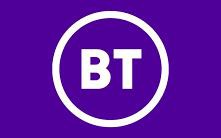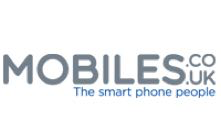 Originally released in 2007, the iPhone is probably the most popular smartphone on the market with its user-friendly interface and sleek appearance. Like the iPad, the iPhone has multi-touchscreen and virtual keyboard with the ability to Facetime and call friends, take photos, videos, play music, send emails, browse the Internet, navigate you with its GPS navigation, amongst an array of other awesome features. With an endless selection of apps, an iPhone can pretty much do anything these days. Be sure to check out our iPhone buyers guide below for details on some of the most recent models on the market.
Originally released in 2007, the iPhone is probably the most popular smartphone on the market with its user-friendly interface and sleek appearance. Like the iPad, the iPhone has multi-touchscreen and virtual keyboard with the ability to Facetime and call friends, take photos, videos, play music, send emails, browse the Internet, navigate you with its GPS navigation, amongst an array of other awesome features. With an endless selection of apps, an iPhone can pretty much do anything these days. Be sure to check out our iPhone buyers guide below for details on some of the most recent models on the market.
See Also: Smart Phones | iPads | Macbooks | Apple HomePod | Apple Watch | Wireless Chargers | Power Banks
Shops With iPhone Offers
The iPhone 15, iPhone 15 Plus & iPhone 15 Pro / Max
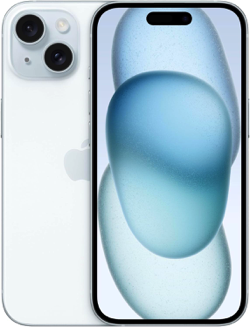 It would be untrue to say that everything is different with the iPhone 15, but there are certain features that were previously limited to the Pro models that you now get with the base model. One of those features is Dynamic Island, which Apple have introduced as standard. The display’s brightness is also twice what the iPhone 14 could manage, so you’re not likely to struggle to look at it in the sun. It is one of the most environmentally friendly phones on the market, thanks to the fact that the battery is 100% recycled cobalt and the aluminium in the frame is 75% recycled.
It would be untrue to say that everything is different with the iPhone 15, but there are certain features that were previously limited to the Pro models that you now get with the base model. One of those features is Dynamic Island, which Apple have introduced as standard. The display’s brightness is also twice what the iPhone 14 could manage, so you’re not likely to struggle to look at it in the sun. It is one of the most environmentally friendly phones on the market, thanks to the fact that the battery is 100% recycled cobalt and the aluminium in the frame is 75% recycled.
That Pro-based improvement also stretches to the camera, which is 48MP in size. The chip is the A16 Bionic one that was first featured in the iPhone 14 Pro. In terms of all of the changes we could tell you about, though, perhaps none will be as noteworthy as the fact that Apple has finally abandoned the lightning charger. It has been replaced with a USB-C cable, bringing it in line with pretty much every smartphone on the market as well as your MacBook and other devices. It might not feel like much, but being able to take just one cable away with you might be a huge difference-maker for some.
iPhone 15 Plus
The iPhone Mini is definitely dead now, with Apple confirming as much by once again releasing a Plus model instead. As with the Plus on the iPhone 14, it is essentially the same phone as the base model, except for the fact that it boasts a 6.7-inch OLED display. It means that is a little bit like an upgrade on the iPhone 14 Pro, in the sense that it has most of that phone’s features but with no lightning cable and the presence of the Dynamic Island. That feature is likely to come into its own as more and more applications figure out how to get the most out of it.
iPhone 15 Pro
It is all-change for the iPhone 15 Pro, with even the physical make up of the phone getting an upgrade. The use of titanium means that it is the lightest iPhone ever, with the 6.1-inch screen boasting the thinnest borders that any iPhone has had. The super-strong ceramic glass in the phone is also impressive. Remember the mute button on previous iPhones? That has been replaced by the Action button, which allows you to assign it any number of tasks that will happen with a press of it, all confirmed via the medium of haptic feedback. Add in the new USB-C charging and you can see this isn’t just an incremental update.
iPhone 15 Pro Max
For a time, the rumour was that Apple was going to introduce the bigger model as the iPhone 15 Ultra. That isn’t the case, however, and it remains the Pro Max in title. It is essentially the same as the 15 Pro, including the titanium case and A17 Pro chip. The 48MP camera is one of the most advanced cameras in a mobile phone, whilst the 5x telephoto camera offers the longest optical zoom on any iPhone ever. All of that comes with a 6.7-inch display to mean that the Dynamic Island really comes into its own. The iPhone Pro Max also has the new Action button, giving it the feel of an iPhone like never before.
iPhone 14, iPhone 14 Plus & iPhone 14 Pro / Max
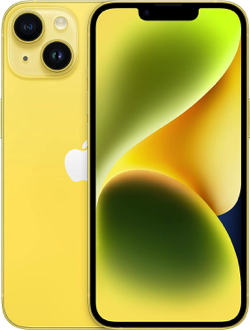 It is yet another incremental upgrade when it comes to the iPhone 14 over the previous model. You aren’t going to experience anything life-changing here with the likes of the 120Hz display from the iPhone 13 Pro still not introduced to the base model. In fact, when it comes to the look and feel of the phone, the iPhone 14 is pretty much identical to its predecessor. There is still the 1P68 water resistance rating and the Ceramic Shield front and tough glass back. In fact, one of the biggest differences is that Apple decided to remover the SIM card slot from the phone.
It is yet another incremental upgrade when it comes to the iPhone 14 over the previous model. You aren’t going to experience anything life-changing here with the likes of the 120Hz display from the iPhone 13 Pro still not introduced to the base model. In fact, when it comes to the look and feel of the phone, the iPhone 14 is pretty much identical to its predecessor. There is still the 1P68 water resistance rating and the Ceramic Shield front and tough glass back. In fact, one of the biggest differences is that Apple decided to remover the SIM card slot from the phone.
That means that it is based on an eSIM service, which is easy to use and allows for as many as eight SIMs on your phone at any one time. The display is still 6.1-inches in size and maintains the Super Retina XDR display that is so impressive to look at. The cameras are much the same as with the iPhone 13, but Night Mode allows for nicer looking pictures in low light. The biggest upgrade is thanks to the introduction of Action Mode, which means that you’ll get less judder if you’re moving the camera around a lot whilst filming. The battery is also a bit bigger, plus Crash Detection can tell if you’ve had a crash and contact emergency services.
iPhone 14 Plus
For reasons known only to Apple, but likely to have something to do with poor sales, the company decided to abandon the Mini option when it released the iPhone 14 range. Weirdly, it was replaced with a phone that was even bigger than the base model, coming in at the 6.7-inches that we’ve grown used to with the iPhone Max range. Unlike the Max, though, the Plus phone is essentially the same design internally as the iPhone 14 but is just bigger. It allows for the big-screen experience without the price tag associated with the Pro Max if that’s something that appeals.
iPhone 14 Pro
Whilst the iPhone 14 itself doesn’t offer a particularly significant upgrade on its predecessor, the same can’t be said of the 14 Pro. The 6.1-inch OLED display is made even more impressive than it was before thanks to the addition of the Dynamic Island, which replaces the notch of the past. It is pill-shaped and sits where the notch sat, but it interacts with various apps within the phone in order to allow you quick access to whatever app you’re using. Tap it once and it will take you to the app, tap and hold and it will give you more options of what you can do with it.
iPhone 14 Pro Max
The Dynamic Island is also present on the iPhone 14 Pro Max, becoming even more influential thanks to the fact that it is a 6.7-inch display on the device. The display is also always-on, as with the other models, meaning that you only need to glance at it quickly to see whether you’ve received a message or something else is going on with your phone. The batter life is much improved, whilst the 48MP camera means that photographs are gorgeous to look at. In many ways, this is the culmination of everything the iPhone has been for years, making it one of the best phones you can buy.
The iPhone 13, iPhone 13 Mini & iPhone 13 Pro / Max
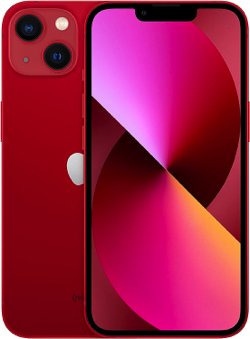 When the iPhone 13 was released, it featured a 5G-ready A15 Bionic chip that meant that it was a genuine rival to the most powerful Android phones on the market. It also offers a slight design change by reducing the size of the notch a touch, making it a more immersive phone to use. On top of that, the cameras on the back of the phone are arranged diagonally rather than vertically. Whilst this is a change that is more about looks than performance, it is still the sort of thing that some people will care about. Similarly, the buttons are in a slightly different place than on the iPhone 12.
When the iPhone 13 was released, it featured a 5G-ready A15 Bionic chip that meant that it was a genuine rival to the most powerful Android phones on the market. It also offers a slight design change by reducing the size of the notch a touch, making it a more immersive phone to use. On top of that, the cameras on the back of the phone are arranged diagonally rather than vertically. Whilst this is a change that is more about looks than performance, it is still the sort of thing that some people will care about. Similarly, the buttons are in a slightly different place than on the iPhone 12.
As you might well have come to expect from iPhones, the 13 is an incremental improvement on the 12 rather than a wholesale change as to what to expect. The brightness is a bet better, for example, whilst the ultra-wide camera performs better in low light. It is the Cinematic Mode on the video function that will be the most entertaining to new users, though. It adds a depth of field to whatever you’re shooting, changing focus automatically and adding bokeh. The video quality is excellent, whilst the CPU can render graphics as much as 20% faster and operate 50% faster overall.
iPhone 13 Mini
There is a market for a smaller iPhone, which is why the iPhone 13 followed in the footsteps of the iPhone 12 by offering a Mini variation. It looks very similar to the previous iteration, with all of the changes taking place under the hood. One of the most important is the fact that the battery is much more impressive, which means you can get more out of the likes of the improved camera sensors. It also comes in 128GB as a minimum, which is twice as much as the previous version of the phone offered when it comes to storage. It is designed for those who want an iPhone but don’t want it to be too big.
iPhone 13 Pro
From a design point of view, you won’t notice a huge difference between the iPhone 12 Pro and the iPhone 13 Pro. The A15 Bionic chip combines with the 6GB of RAM to mean that it offers a much more impressive performance in terms of actual use, however. Again, it offers a minimum of 128GB of storage, ranging up to 1TB for those that need that sort of size. The camera is where it is at its most impressive, with the photographs that you take being improved courtesy of the 120Hz screen. That is not available on the iPhone 13, so if you want a phone that looks incredible then this is the one for you.
iPhone 13 Pro Max
That impressive 120Hz screen is also in place on the iPhone 13 Pro Max, as you’d expect from a phone that is essentially the same as the Pro but with a much bigger screen. It shifts from 6.1-inches to 6.7-inches, ensuring that you can see virtually everything you might need to on the screen. That is also aided by the fact that the notch is 20% smaller and thanks to the screen being a fair bit brighter. It is the sort of thing that will be noticed by someone that likes to scroll through things quickly, whilst photographers will like the bigger camera array than on the previous model.
The iPhone 12, iPhone 12 Mini & iPhone 12 Pro / Max
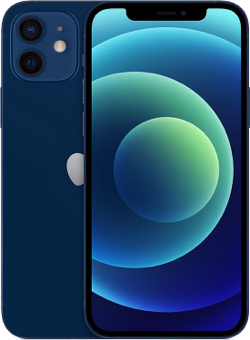 Apple’s iPhone is the thing that really changed the market when it comes to smartphones, moving the dial every time a new one gets released. When the iPhone 12 hit the market, it did so with an OLED display and the A14 Bionic chip on board, as well as a squared-off design that have it a somewhat industrial look. The iPhone 12 brought in an OLED Super Retina XDR display and was the first iPhone to offer users 5G connection, adding MagSafe to the Qi wireless charging that the iPhone 11 had. Offering water resistance to six metres for up to 30 minutes was also a pleasant change.
Apple’s iPhone is the thing that really changed the market when it comes to smartphones, moving the dial every time a new one gets released. When the iPhone 12 hit the market, it did so with an OLED display and the A14 Bionic chip on board, as well as a squared-off design that have it a somewhat industrial look. The iPhone 12 brought in an OLED Super Retina XDR display and was the first iPhone to offer users 5G connection, adding MagSafe to the Qi wireless charging that the iPhone 11 had. Offering water resistance to six metres for up to 30 minutes was also a pleasant change.
One of the things about the iPhone 12 that made it an improvement over the iPhone 11 was with the cameras, thanks to Smart HDR 3 and the Wide Lens f/1.6. That OLED display also makes photos look incredibly crisp, whilst the reduced bezels mean that photos can go all the way to the edge. The software Apple use with the iPhone 12 make it much more impressive than the iPhone 11 when it comes to the photo processing. The A14 was, according to Apple, the ‘fastest chip in a smartphone’ at the time of release, making it faster than the iPhone 11 in terms of response and what you can get the phone to do.
iPhone 12 Mini
If you’re on the lookout for a new iPhone but feel like the 6.1-inch screen is just to big, you can instead opt for the iPhone Mini. That comes in at 5.4-inches in terms of screen size, but is otherwise not dissimilar to its bigger brother. One of the biggest differences that might end up being a deal breaker, though, is the smaller battery. It is the smallest of the range, meaning that it will almost certainly need to be charged at some point if you’re hoping it will make it through an entire day and evening. Its size and nature mean that it might be best-suited to younger people or those that don’t use their phone too much.
iPhone 12 Pro
Whilst the camera and associated software is good on the iPhone 12, the 12 Pro takes things to another level. The phone itself has the same dimensions and the same chip as the 12, but it offers more raw power than the base phone. That is thanks to the increase in RAM, plus an extra camera sensor on the back allowing for 2x optical zoom. As with the iPhone 12, the 12 Pro also allows for MagSafe connections, with the phone intelligently knowing what it is you’ve connected provided it is an official product. This is a phone for camera enthusiasts looking for that little bit more than the iPhone 12 can offer.
iPhone 12 Pro Max
Just as the iPhone 12 Mini offered a smaller alternative to the iPhone, so too is there a much bigger version. That comes in the form of the iPhone 12 Pro Max, which was the biggest iPhone that Apple had made when it came out. The OLED display stretches to 6.7 inches, with images being much clearer on the larger display. The cameras are where it’s at, though, with three of them on the back and a 12MP sensor allowing for the capture of more light. This, combined with the improved processing, allows for genuinely impressive photographs to be taken. You can also record video in 4K and HDR.
The iPhone 11 & iPhone 11 Pro / Pro Max
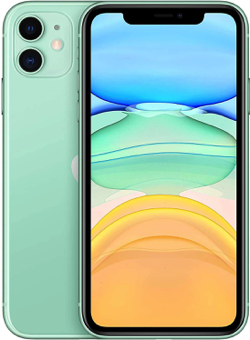 The autumn months are known for several things. The clocks changing. The leaves falling off the trees, and, in the 21st century, the release of a new iPhone. In the past, Apple has come under criticism for making a big song and dance about a new iteration of its flagship phone when in reality, very little has changed. However, in 2019, we think Apple are right to blow their trumpets loud and proud with the release of the iPhone 11 Pro in particular, as it’s pretty clear to everyone in the know that Apple have essentially “solved” phone cameras.
The autumn months are known for several things. The clocks changing. The leaves falling off the trees, and, in the 21st century, the release of a new iPhone. In the past, Apple has come under criticism for making a big song and dance about a new iteration of its flagship phone when in reality, very little has changed. However, in 2019, we think Apple are right to blow their trumpets loud and proud with the release of the iPhone 11 Pro in particular, as it’s pretty clear to everyone in the know that Apple have essentially “solved” phone cameras.
The newest iPhone range has a bunch of exciting features that will rival the capabilities of a DSLR, but that’s not all. 2019’s phones are lot faster thanks to the inclusion of Apple’s newest chip technologies, something that you might not notice straight away, but you will in a year or so when software takes further leaps forward and your iPhone 11 has no problems keeping up. In addition, Apple are also boasting of a huge leap in battery life, which is pretty impressive given the upgrade in processing power.
Sizing
iPhone 11
The iPhone 11 is the same size and weight as last year’s phone, the XR, being 5.94 inches long, 2.98 inches wide, and weighing 194 grams. If you have the XR then the 11 will feel pretty comfortable in your hands. Apple ditched their signature button several generations back, and so almost all of that size is taken up by the screen.
iPhone 11 Pro / Pro Max
Surprisingly, for the more expensive version of the iPhone 11, the iPhone 11 Pro is smaller, being 5.67 inches long, 2.81 inches wide and weighing 188 grams. However, Apple have also released a Max version of the Pro for those who prefer their phones on the larger size. The Max is 6.22 inches long, 3.06 inches wide, and weighs 226 grams. That’s pretty hefty!
Storage Size
Long gone are the days when 32gb or less were enough storage space for the average smart phone user, which is why the capacity choice for the iPhone 11 starts at 64gb. iPhone 11 users can choose between 64gb, 128gb, and 256gb. With the iPhone 11 Pro there is a choice of 64gb, 256gb, or a whopping 512gb. Older millennials who grew up with desktop computers with less hard drive space than this are probably pretty blown away by these figures.
Colour
OK, so colour isn’t probably the number one factor for most people when choosing a new phone, but the iPhone 11 has a funky range of colours that will certainly appeal to the style conscious consumer. Choose from black, green, yellow, purple, red, or white.
However, Apple clearly think that users of the iPhone 11 Pro will have more sophisticated tastes when it comes to colour, with a more executive range. Here the choices are gold, space grey, which is what everyone else calls dark grey, silver, and something called “midnight green”, which is basically black but with a slight green tinge.
Under the Hood
iPhone 11
This year, everyone is talking about the camera on the iPhone 11, and tech experts pretty much agree that Apple’s latest iteration blows the competition out of the water. The iPhone 11 doesn’t have the full benefits of Apple’s new camera technology, as that’s been reserved for the 11 Pro (see below), but you can still capture crystal clear images that will wow your followers on social media.
So, what’s new? Apple have added a dual lens on the iPhone 11 so you can opt between wide and ultra-wide lenses, giving you the opportunity to capture more of the world around you. Not only that, but Apple have made significant improvements to its HDR and portrait modes, plus, they have finally caught up with the likes of the Google Pixel and developed a Night Mode that allows the user to capture stunning detail in dark conditions. Of course, Apple being Apple, this feature can’t be manually triggered. Instead, the iPhone 11 automatically detects when Night Mode is needed and switches it on for you, however, you can turn it off. It’s also only available on the regular lens and not the ultra-wide lens.
The iPhone 11 is also capable of video recording in 4K at 60 frames per second, which is a LOT of detail. What’s more, you can record using the ultra-wide lens so if you ever fancied yourself as a Hollywood director, you now have the equipment to make some outstanding action shots. The video recording functionality also includes an audio zoom. That means if you zoom into something in the distance, the audio zooms in as well, focusing on your focal point instead of the audio in your vicinity.
It’s not all about the camera. Apple have also included new chip technology in its newest range of phones that it claims is the fastest chip to ever be included in a smart phone. Expert testing has shown that when stress tested, the iPhone 11 performs significantly better than Google’s flagship Pixel 4XL for instance. Of course, as a day-to-day user you probably won’t notice that an app takes a few milliseconds less time to load, but in the long term, this means that you are less likely to suffer from the usual phone lag that most users complain about as their phone gets older and software becomes more bloated and requires ever more processing power.
Other improvements that Apple have made for the iPhone 11 is an increase in battery life. Apple claim it’s improved significantly over the iPhone XR but of course, most of these claims are made through lab testing, rather than on reports from average users. However, you should find it pretty tricky to drain the battery in an entire day, even if you are a heavy user. Apple have also tweaked the Face ID system to make it better and improved the water resistance of the phone so there is now even less of a worry if you drop it in bath. Finally, the iPhone 11 display is the same LCD technology found on the iPhone XR, but that isn’t necessarily a bad thing, since Apple make very good displays for their phones anyway. If display improvements are important to you, then you need to check out the Pro version.
iPhone 11 Pro / Pro Max
Unlike the iPhone 11, there are two sizes available to choose from, with the larger named the iPhone Pro Max. Other than being bigger, with a larger display and longer battery life, there isn’t any other difference between the Pro and the Pro Max, so for the rest of this article we will just treat them as one phone.
Like the iPhone 11, the Pro has Apple’s latest chip technology giving it ultra-fast processing speed. Apple have further upgraded the battery life on the Pro significantly, meaning that most users will be able to use their phone for a couple of days on a single charge.
The main differences between the 11 and the 11 Pro are found in the camera and the display. The Pro benefits from all the camera features of the 11, but the Pro also has a third telephoto lens that allows you to zoom in on distant objects without reducing image quality, meaning that you can achieve even more fantastic images with this version.
The display on the Pro is a significant upgrade on the 11, using what Apple has called “Super Retina XDR display”. What this translates to is a much higher pixel density and increased brightness. Put the Pro side by side with the 11 and you will certainly notice a marked difference, but whether this and the additional camera lens, along with an increase in battery life is worth the extra cash that the Pro versions cost compared to the 11 is something that you will need to consider when making your purchase.
iPhone 11 / iPhone 11 Pro Improvements
It’s clear that Apple have made some big leaps this year, especially in camera technology where it has recently lagged behind some of its Android rivals. The improved chip speed and battery life will certainly give these phones greater longevity and if you are due an upgrade then they are phones that won’t disappoint. If photography and a stunning display is important to you, then opt for the Pro, but for the standard smart phone user we think the iPhone 11 will do the job just fine and more.
iPhone SE
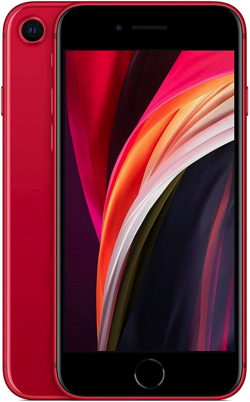 In 2016, Apple released a product that the called the iPhone SE. Four years later and they’ve decided to repeat the trick, this time modelling the phone on the ideas behind that 2016 iteration. In essence, what Apple have looked to do with the 2020 version of the iPhone SE is make its most affordable phone to date, offering people the opportunity to own an iPhone without having to break the bank to do so.
In 2016, Apple released a product that the called the iPhone SE. Four years later and they’ve decided to repeat the trick, this time modelling the phone on the ideas behind that 2016 iteration. In essence, what Apple have looked to do with the 2020 version of the iPhone SE is make its most affordable phone to date, offering people the opportunity to own an iPhone without having to break the bank to do so.
Of course, with affordability comes a degree of compromise. You’re not going to be getting the bells and whistles that the newest iPhones all offer, but you are going to be getting one of the most recognisable mobile devices in the world. It’s also fair to point out that the SE is better even than the likes of the iPhone 8 in terms of what’s under the hood, so it is night and day when compared to the predecessor that it’s modelled on from 2016.
Sizing
Let’s start by looking at the size of the iPhone SE, which Apple claims is the most popular that it offers. Whether this is because it tends to be the cheapest that it offers when new models are released is not something that they get into, somewhat understandably. The display is 4.7 inches, which is possible thanks to an overall phone size of 5.45 inches in height and 2.65 inches in width. It’s also 0.29 inches thick and weighs 148 grams.
Storage Size
Apple have never been the most generous company in the world in terms of the way that they do their storage sizing, often starting low and whacking the price up if you want to opt for a more practical size. The’ve opted for a slightly different tactic with the SE, starting it out with at least a mildly useful 64GB of storage. If you’re the sort of person that eschews online streaming and keeps songs and photos on your phone, you might want to opt for the 128GB or 256GB instead.
Colour
The whole point of the 2020 version of the iPhone SE is that it removes a whole heap of options in favour of keeping the price of the device down as low as possible. As a result, the SE is only available in three colours: black, white and (PRODUCT) RED. That they have opted for such basic primary colours might disappoint some people, but given that the vast majority of iPhone users hide the phone away inside a case anyway, we’re not sure it makes much difference.
Under the Hood
In terms of its size and what the iPhone does, the SE doesn’t differ all that much from most iPhones that have been released since 2013. Where it really does come into its own, however, is when it comes to what’s under the hood. In that sense, this is a relatively impressive phone offering plenty of bang for its buck. That 4.7 inch screen offers a Retina HD display, which is slightly old hat compared to OLED offerings but still visually impressive in its own right.
It is water resistant, which is something that offers a degree of usefulness for most people, whilst the use of the A13 Bionic chipset means that it’s powered by the same thing as the iPhone 11. That adds speed across the board, which truly does show in the new phone’s performance. Whilst it’s not as good as the 11 for a whole host of reasons, it’s not far off when it comes to how quickly it does what you tell it to.
The iPhone SE’s inner-workings mean that it’s able to operate the latest version of iOS, which automatically give it a more modern feel. The camera, meanwhile, only offers a single lens and boasts pretty much the same spec as the one on the iPhone 8, but using it alongside the A13 chipset does mean that the performance is much improved. Most users will be perfectly pleased with the photographs that they take, even if Portrait Mode leaves a little to be desired.
The 12 megapixel camera and the A13 chipset combination means that the phone allows you to do most of the tricks that the iPhone 11 and 11 Pro can do, even if the lack of a depth-sensing sensor means it’s a slightly watered down version. You can film in 4K, too. Again, the use of the A13 chip means that the phone’s ability to process images is much improved, even if that leads to a slightly cooler feeling than photos taken with the iPhone 8.
Arguably the biggest disappointment with the iPhone SE is the battery, which is unlikely to last most users a full day on a single charge. The good news is that it offers wireless charging and works with Qi chargers, also promising fast-charge capability. This means that just a half an hour charge on an eighteen watt charger will see the battery hit the 50% charged mark. You’ll get about the same out of it as the iPhone 8, but whether that’s enough will depend on your usage.
If you’re the sort of person that listens to a lot of music and has a top-notch pair of headphones that you use then you’re going to be disappointed to learn that Apple has not changed its mind about the headphone jack, so it remains absent here. Touch ID has been improved year-on-year when it comes to using your fingerprint to login to your phone or buy stuff using Apple Pay, plus you can get involved with Augmented Reality if you like that sort of thing.
iPhone SE Wins on Price
In many ways, the 2020 iteration of the iPhone SE feels like a throwback. The modern versions of the phone have virtually bezel-less displays, promising an all-screen design. The other phones also have heavier premium aluminium workings inside, so a return to different materials to make it lighter as well as a fingerprint login and larger top bezel means that it feels like a ‘classic’ iPhone. The key point for most users, though, will be the price and on that front it’s a winner.
The iPhone 8, 8 Plus & iPhone X
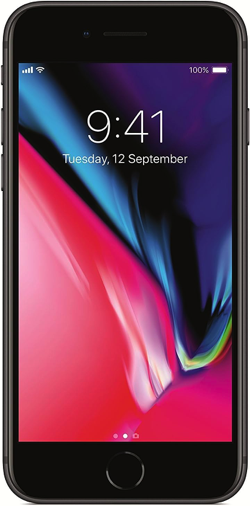 Here in 2017, it’s another year, which means another new iPhone. Apple is a company that loves to keep moving forward, perhaps believing that, like a shark, it will die if it doesn’t. More often than not it is evolution rather than the revolution, despite the company’s regular claims that they’ve changed the game. Those who aren’t fans of Apple will regularly say that it’s just an attempt to grab as much money as possible, but that’s not really fair. The truth is that technology is moving on at such a pace that if they waited two years then the previous generation of iPhone would be practically obsolete.
Here in 2017, it’s another year, which means another new iPhone. Apple is a company that loves to keep moving forward, perhaps believing that, like a shark, it will die if it doesn’t. More often than not it is evolution rather than the revolution, despite the company’s regular claims that they’ve changed the game. Those who aren’t fans of Apple will regularly say that it’s just an attempt to grab as much money as possible, but that’s not really fair. The truth is that technology is moving on at such a pace that if they waited two years then the previous generation of iPhone would be practically obsolete.
If you’re still using an iPhone 4 then you might think that’s a laughable statement, but put it up next to one of the newest models and you’ll see that’s it night and day in terms of performance. This year Apple have gone even further than usual, releasing not one, not two but three different models. As it is a decade since the first iPhone genuinely did change the game, it seems that the company is attempting to do so again. The iPhone Ten, or the iPhone X to give it its official name, is so markedly different to the other two models that we’ll cover it under its own heading where relevant.
Sizing
iPhone 8 and 8 Plus
For the past two years the main iPhone’s have had the same screen sizes, with the regular phone coming in with a screen size of 4.7 inches and the Plus model stretching to 5.5 inches. As with last year’s iPhones, both screens have a Retina display. Making the move from 4.7 inches to 5.5 inches will feel strange at first, but once you’ve got used to the larger phone size the smaller one will feel like a toy.
Whichever way you dress it up, there’s no practical difference in terms of the size of the phones themselves. If you’ve got an iPhone 7 and are thinking are moving up to the Plus size or vice-versa then it’s worth upgrading for that, but size alone shouldn’t dictate your decision of whether to upgrade or not if you’re sticking with the same screen real estate.
iPhone X
The iPhone X is the largest iPhone yet in terms of how big the screen is. In part, that’s because the new screen goes right the way up to the edge and there’s no home button. That means that it stretches out to be 5.8 inches big, meaning that those of you that have just got used to the move to the Plus model will have to adept yourselves once more.
Storage Size
Last year, Apple made the wise decision to get rid of the pointless 16GB iPhone and made the entry-level option 32GB, however, they also removed the 64GB which was most people’s go-to choice of internal storage size. This year they’ve corrected their mistake, making the entry-level phone size on all three models 64GB and making the next choice up 256GB. They’re your only two options regardless of whether you go for the 8, the 8 Plus or the X, but they’re good enough for the majority of people.
Colour
For reasons known only to Apple, you can’t get the iPhone X in Gold. You can get all three models in Space Grey and Silver, but Gold is only available on the iPhone 8 or 8 Plus. It’s unlikely that you’re going to choose a phone based on colour alone, but it’s still important to know.
Under the Hood
iPhone 8 and 8 Plus
Apple absolutely love to throw a curveball out whenever possible. Last year, they shocked the industry when they decided to abandon the headphone jack that has been in every iPhone since the first one hit the market. The main reason for this, according to the company, was because of the desire to give the phone some water-resistant capabilities. The reality, however, is likely to be far more commercial, with the company hoping to flog their AirPods, the wireless version of their headphones.
There’s still no headphone jack this time around and the water-resistant and dust-resistant nature of the phone is pretty much the same as it was last year. What they have done, though, is introduce the long-awaited capability to charge your phone wirelessly. You don’t get a wireless charging pad with the phone, but it will work with any of the Qi-compatible wireless charges already on the market or coming out in the future. If you don’t think wireless charging is going to be for you then don’t worry, you can still use the same lightning connector that the iPhone 7 and 7 Plus used.
They’ve been able to make wireless charging a thing by changing the phone to an all-glass design. Apple have declared this to be ‘the most durable glass ever’ to be used in the making of an iPhone, though what that means in practical terms is anyone’s guess. All you need to know is that it’s no longer metal or plastic and will charge if you put it on a Qi wireless charger.
Apple have made some improvements to the cameras on both models, though once again it is only the Plus model that feature the wide‑angle and telephoto lenses that allow for some truly breath-taking photos to be taken in Portrait Mode. iPhone 8 photographs will look better than those taken on an iPhone 7 thanks to the re-designed 12MP camera, but if you’re buying one of these two phones for the sort of photos you can take then you’ll definitely want to opt for the Plus.
There’s a new A11 Bionic chip that’s meant to be the best one ever in a phone, but in reality, you’re unlikely to really notice much on that front. One thing you probably will notice is the True Tone that has been added to the Retina HD functionality of the previous model. This will automatically adjust the white balance of your photographs to match the lighting around you. The colours are also more accurate thanks to the wider colour gamut and the dual-domain pixels.
iPhone X
If it doesn’t seem like there are any game-changing differences between the iPhone 7 models and the iPhone 8 ones, that’s because there aren’t. Instead, Apple made incremental changes there whilst introducing a different model that they’ve declared to be ‘the phone of the future’. The iPhone X brings in the biggest changes to Apple’s phone design since the very first model was introduced. In many ways, all models since then have boasted slight changes year-on-year, but the overall design has remained very similar. No longer is that the case.
The first and most obvious thing you’ll notice about the iPhone X is that the home button has been removed completely. That faithful button that would do everything from let you into the phone via the fingerprint sensor through to taking you back to the iPhone’s main screen is no more. Instead, the phone can be unlocked thanks to facial recognition; something that’s been made possible by the introduction of what Apple are calling a TrueDepth camera on the front of the phone.
The company claims that Face ID is their most secure way of protecting your phone ever invented, thanks in no small part, to the fact that you have to actively look into the camera in order to unlock it – someone won’t be able to present the phone to you whilst you’re asleep and steal all of your information, for example. The front of the phone has an infrared camera, a flood illuminator and a dot projector that will allow you to get into your phone even if it’s dark where you are.
Those cameras also allow you to create ‘Animojis’, which are emojis that come to life thanks to the movement of the muscles in your face. It may well be little more than a gimmick, but it’s a fun one that will be particularly popular with youngsters. On the back of the phone, you’ll find the same camera that’s on the rear of the iPhone 8 Plus, only it runs down the phone vertically rather than sits horizontally. There’s also the same wireless charging capability on a Qi-compatible device as with the other iPhones.
If the lack of a home button is the biggest obvious difference between the iPhone 8 models and then X then the most important is undoubtedly the move to an OLED screen. LCD has been the company’s standard for a decade, so this shift is an eye-catching one; literally. The acronym stands for organic light-emitting diode, as opposed to liquid-crystal display, and the difference is that OLED displays don’t need a backlight. This means that the blacks are blacker and that the screen is a lot less power-hungry than its LCD equivalent. So, you might be wondering: will this mean an increase in battery length? Probably not. It is Apple, after all.
Other Considerations
When you open your box you’ll find your new iPhone, headphones with a lightning cable connection, as well as a jack-adapter and the now-standard Apple lightning charging cable. If you want a pair of Bluetooth headphones, a wireless charging pad or anything else, such as a protective cover, then you’ll have to buy them separately. Apple will be releasing the AirPower in the not too distant future, which will allow you to charge your phone, your watch and your AirPods at the same time.
One thing that should be mentioned is Apple’s move to introducing Augmented Reality as a big part of the future of the phones. The company demonstrated several AR games at the Keynote launch and it’s likely that they’ll start to push this aspect more and more in the coming months and years. From playing a game where it seems as though the action is taking place right in front of you, through to being able to imagine what it will look like to have a piece of furniture in your home, the introduction of Augmented Reality is likely to be an interesting one.
iPhone 8, 8 Plus & X: Not Much Different to iPhone 7
The reality is that, however much Apple might like to pretend otherwise, there’s nothing particularly thrilling about the iPhone 8 or 8 Plus if you’ve already got one of the 7 models. It’s probably not worth making the upgrade there if you’re only one generation behind the curve, though you’ll want to consider it if you’re keen on changing the size of phone you use or you’ve got a 6s or younger model. Where the iPhone 8 is evolution, the iPhone X is very much revolution. If you want to experience a completely different world, then there’s no question that that’s the phone to choose.
The iPhone 7 & 7 Plus
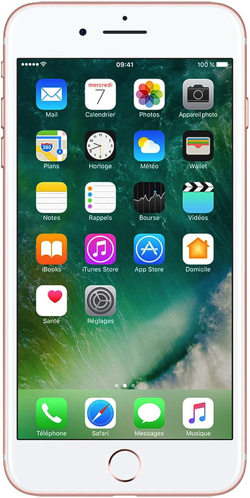 If you speak to loyal Android users they will scoff at Apple’s constant launches of their new products. Android have product launches too, it’s just that nobody cares. Every year thousands of people gather to hear about the new iPhone and in September of 2016 they heard about the launch of the new iPhone 7 and it’s larger screened friend the 7 Plus.
If you speak to loyal Android users they will scoff at Apple’s constant launches of their new products. Android have product launches too, it’s just that nobody cares. Every year thousands of people gather to hear about the new iPhone and in September of 2016 they heard about the launch of the new iPhone 7 and it’s larger screened friend the 7 Plus.
Immediate reaction suggested that not much had changed, certainly not with the standard model. However, time reveals all, as they say, and in the weeks and months since the launch we’ve discovered a fair amount about the new phone to suggest that it might just be worth the upgrade if you’re the sort of person that likes to have the latest and greatest models. Here’s some info that you might want to consider:
Sizing
Much like its predecessor, the iPhone 6s, the latest iteration of Apple’s much vaunted mobile device comes in two sizes: The 4.7 inch iPhone 7 and the 5.5 inch iPhone 7 Plus. Those measurements refer to the screen size, so that’s the main thing you need to think about when considering which model to go for.
If you have used a 4.7 inch phone or smaller in the past then it will feel extremely alien to move to the larger screened phone to begin with. It won’t take long to get used to, however, and when it comes to features the iPhone 7 Plus definitely has the edge over its smaller sibling. For that reason, it’s a change you should seriously consider making.
Storage Size
Apple have blessedly decided to get rid of the pointless 16GB model with these new phones, so the entry level model is the 32GB. Weirdly, there’s no longer a 64GB offering either, which was most people’s go-to size of phone. Instead it leaps to the 128GB phone and then doubles again for the 256GB variation.
Colour
When it comes to colours the major change was with the introduction of the Jet Black phone. It’s a sleek, impressive looking device but the nature of the material used to build it means that it is essentially a magnet for fingerprints. As well as the Jet Black, you can also get a matte black edition, simply called Black. The remaining options are Silver, Gold and Rose Gold.
Under the Hood
As is often the case with Apple devices, the major changes to the mobile this time around have come under the hood. In fact, this model of the iPhone features one of the biggest talking point in years: The removal of the headphone jack.
Apple are known to lead the field when it comes to innovation, but their decision to remove the standard headphone jack in favour of a lightning connection that will both charge your phone and play your music is a strange one. Given that they already use a proprietary charger it’s difficult to see why the likes of Samsung would choose to follow suit.
The reason Apple have chosen to take this unprecedented step is to allow the iPhone to improve its waterproofness. Both phones are rated as having an IP67 water-resistant and dust proof certification, meaning that you can drop it in the toilet and not have to hide it in a cupboard inside a bag of rice for a few hours afterwards.
The other major improvement is to the camera on both devices, though in truth the iPhone 7 Plus is really the main beneficiary of the changes. Both phones now have cameras with an improved sensor that allows them to work better in low light, as well as a flicker sponsor that aids you if you’re shooting in artificial lighting. The iPhone 7 Plus, meanwhile, now has two cameras in the back. This allows optical zoom to be improved as well as an ability to add cool effects to your photos such as being able to keep the face of a subject in photo whilst blurring the background.
The final major change is with to the Home button. No longer is there a physical button that gets pressed in when you need to return to your home screen. Instead there’s a solid-state unit that gives you haptic feedback, much like the iPhone 6s screen did when you took advantage of the 3D Touch function. It’s another thing that takes a little bit of time to get used to but actually makes little difference to your day-to-day usage of the phone; especially when you consider that Apple allow you to play with the button’s sensitivity settings.
The only other thing you might want to know about is the battery. Apple products are notoriously bad at making it through a full day without needing a charge, but there have been some slight improvements to this model. The iPhone 7’s battery is a little bit better, but the iPhone 7 Plus’ is significantly improved. You will still need to charge your phone at the end of the day but at least now you’re likely to make it all the way through the day on one charge, even if you use your phone quite heavily.
Accessories
Given the changes to the headphone situation, it’s only fair to give a quick mention to the accessories you get with your new iPhone. As well as a pair of Lightning EarPods that connect straight to the phone, you’ll also receive a Lightning-to-Phono adapter. This lets you use your standard headphones with your new fangled iPhone. Perfect. Apple are also releasing new wireless headphones called AirPods that might be preferential if you’re an audiophile.
iPhone 7 & 7 Plus: Go for the Plus
If you don’t mind using a phone with a larger screen then there’s no question that the iPhone 7 Plus is the better of the two products. Between the larger battery and the twin-lens camera, you’ll have to pay more but you’ll be rewarded accordingly.
The iPhone 6s + 6s Plus
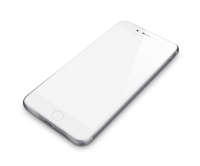 The most recent versions of Apple’s most famous gadget seem like the right place to start. Released earlier on in 2015, the iPhone 6s and 6s Plus launch claimed that ‘the only thing that’s changed is everything’. That’s not exactly true, but there were plenty of leaps forward in subtle ways that are worth looking at.
The most recent versions of Apple’s most famous gadget seem like the right place to start. Released earlier on in 2015, the iPhone 6s and 6s Plus launch claimed that ‘the only thing that’s changed is everything’. That’s not exactly true, but there were plenty of leaps forward in subtle ways that are worth looking at.
For the sake of keeping things as simple as possible we’ll talk about all of the features of this phone and then, as we look at the earlier versions of the phone, we’ll tell you what the other iPhones don’t have in comparison.
Sizing
One of the first decisions you’ll have to make when you’re looking at the latest version of the iPhone is what size phone you want to get. The iPhone 6s has a 4.7 inch screen, whilst the iPhone 6s Plus has a 5.5 inch screen. The best way to figure out which one you think you should get is by considering what you’ll be using it for.
If you already own an iPad or an iPad mini, for example, then the iPhone 6s Plus probably won’t make a whole lot of difference to your life. The large screen size of the 6s Plus means it lacks the immediate portability of its smaller sibling, but it does mean that it’s the ideal device for things like watching films, playing games and so on.
If you don’t own an iPad but would like something that is a bit of a halfway house between a phone and a tablet, a phablet if you will, then the iPhone 6s Plus will be ideal. If you just want to make calls, send texts and generally use your phone as a small, convenient personal computer then the 6s will be fine.
Storage Size
Both the 6s and the 6s Plus come with three storage sizes: 16GB, 64GB and 128GB. Which one you opt for depends on what you’ll want to use your phone for and how much you can afford – the price you’ll pay for each phone grows with the size of storage it offers.
If you mainly use the phone as a phone or else to stream things, send texts and go online then you might just get away with the entry level 16GB phone. The iPhone 6s does have the ability to shoot 4K video and take high resolution photos, however, so if you are the type of person that likes to do that then you’ll really want to consider the largest possible storage size.
It’s worth having a think about what you are likely to do with your phone. If you know you’ll want to download things to the phone to stream offline – music, videos etc. – then you’ll need to bear that in mind when choosing your phone storage size. In reality most people would do well to go for the 64GB version, but do remember that you can’t add an external memory drive to the iPhone, so what you get is what you’re stuck with.
Colour
The latest iPhones come in a choice of colours: Silver, gold, space grey, rose gold. These are a major advancement on the original iPhone that only came in black, but realistically it’s down to personal preference. The best thing to do here is to either have a wee look on line or else pop in to an Apple shop and check out the different colours.
If you like something practical and sensible then you’d probably be looking at the silver or space grey phones. If you’re the sort of person who enjoys a bit of bling and wants people to know that you’ve got the latest and greatest iPhone then gold and rose gold are a touch more ostentatious.
The only other thing to bear in mind is whether or not you like to put your phone in a protective case. If so then you really don’t need to spend too long thinking about the colour of the phone as you won’t be able to see it anyway.
Under the Hood
Some of the biggest improvements on the iPhone 6s come under the hood, in areas you can’t see and provably don’t realise are making much of a difference. The screen resolution on the 6s is 1334×750 (326 ppi) and it’s 1920 x 1080 (401 ppi) on the 6s Plus, for example. You might not think it matters, but if you’re going to be spending hours of your life staring at a screen then you want it to be as clear as possible.
The other things that have changed are the quality if both cameras – something that could really make a difference if you like to use your iPhone as a makeshift digital camera. The rear camera has now been upgraded to 12 megapixels, whilst the front facing camera has a 5 megapixel sensor and a new feature called Retina Flash. It is ideal for those of you who love selfies! The Retina Flash involves lighting up the phone’s screen to give the illusion of a faux-flash.
One of the other big improvements camera wise is the addition of what Apple are calling ‘Live Photos’. This essentially involves the camera recording a little bit of video before and after the photo itself. It means that you get to see what was going on before and after the photo, seeing things as they happened. It’s gimmicky, yes, but it’s really fun too.
Last but not least camera-wise is the addition of 4K videos, shooting in 3840×2160-pixel frames, absolutely top of the range if you want to use it. It’s as good as you’re likely to get on a digital camera, let alone a mobile phone.
The battery life of the iPhone 6s also seems to have seen some improvement, with the combination of it featuring a brand new battery as well as taking advantage of the new tricks Apple has come up with to help your battery last. You’ll almost certainly still need to charge it every day, but you’ll probably get more of a full day out of it and you’ll also be able to take advantage of the new ‘Lower Power Mode’; this involves the iPhone shutting down all non-essential things to help you get a little bit more juice out of your phone before it turns off altogether.
The big thing about the iPhone 6s and its larger partner is the speed with which it operates. Thanks to the A9 185Ghz dual-core chip, both the phone operation itself and Siri, Apple’s personal assistant, work much faster than before. We’re not just talking faster than previous iPhones, either; the iPhone 6s gave the 2015 MacBook a run for its money, speed wise.
Siri is something that people either seem to love or hate. Yes Apple have given its personal assistant a few funny phrases to use in response to given questions, but can you really be bothered to talk to your phone rather than just pick it up and use it? Some people can, so they’ll be pleased to know that the response time has improved considerably.
The other thing Apple has introduced is the ability of the phone to constantly be on the listen for your saying “Hey Siri”, thereby activating the phone with your voice rather than your finger. In order to stop family members abusing it you’ll also have to say the phrase several times, giving the phone the chance to recognise your voice and your voice alone.
The Materials
The iPhone 6s has taken the 7000 series aluminium material used earlier this year on the Apple Watch Sport and ran with it. It’s the material that is used in the aerospace industry, so it’s tougher than the stuff Apple has used in the past.
Apple have also added a glass screen, with the company claiming that it’s the strongest smartphone glass in the world. They’ve used a new dual-ion-exchange process to toughen it up. It is, again, the same material used on the Apple Watch Sport. We wouldn’t suggest throwing the phone around or dropping it on concrete floors, but if you’re the sort of person who tends to be a bit clumsy with your phone then you’d be wise to look towards the new phone to keep you as safe as you can be.
Another added benefit of the new material is that it might, just might, survive a bit better if you drop it in water. We’ve all used it in the rain, spilt a drink on it or accidentally dropped it in the water. The improvements to the aluminium and the glass mean that if you are the sort of person who drops it in water you might not have to pay out for a new phone when you do. Don’t quote us on that though!
Touch ID
The iPhone 6s and 6s Plus both have Touch ID, the ability to unlock your phone with a fingerprint rather than a passcode. It is a safer way to protect your phone as no one can see you type in your thumbprint. You can also use it for things like Apple Pay and for the App Store and iTunes.
The key differential for the iPhone 6s and 6s Plus is the speed with which the Touch ID can open your phone. It now feels almost immediate when you use the touch pad to get into your new smart device.
3D Touch
3D Touch is, without question, the number one selling point of the new iPhone 6s and 6s Plus. It is, essentially, a touch sensitive screen that lets you do more than the usual with your mobile. Various levels of pressure will result in different outcomes, depending on the app you’re using.
On launch it was only really the in-built Apple apps that could take advantage of the 3D Touch, but the longer the new phone is out the more time app developers have to work with it, thereby giving them the opportunity to introduce to their own apps.
Want to go straight to composing a message without having to open the messaging app and scrolling through the menus? 3D Touch will let you do that. Want to phone someone back without messing around with going into your contacts? 3d Touch brings up a list of your most recent calls if you use it on the Phone icon.
3D Touch is a brilliant addition that you’ll only really come to appreciate the more that you use it. It is a genuine game-changer that will come into its own when app developers get on board with it. For now, if you get a new iPhone make sure you experiment with the 3D Touch as often as you can.
Apple’s Ecosystem
The biggest thing that comes with the evolution of Apple’s system is the integration offered between all of its devices. Obviously the Apple Watch works flawlessly with the iPhone, but it’s the way that the iPhone works with the iPad and the different MacBooks that is the most impressive.
Continuity and Handoff both allow you to pick up from where you left off on any device you’re using. You can connect photos, music and even your Safari browsing between any of your Apple products. On top of that you can also hook up to cloud services like Dropbox and Google Drive to keep files updated on all your devices.
iPhone 6s & 6s Plus: An Upgrade from the 6
Is the iPhone 6s and its larger sibling worth upgrading to? It depends entirely on what you use your smartphone for. If you want vast, sweeping changes before you move to the latest phone then it’s unlikely you’ll be all that bothered about moving to the newest iteration of the iPhone.
If, however, you like things to be quicker and you use your phone so much that you feel you’ll benefit from the improvements in the new phone then it’s something of a no brainer to get the 6s.
Should you move to the iPhone if you’re an Android user? It depends on whether you’re prepared to immerse yourself into the Apple ecosphere. You don’t have to own a MacBook or an iPad to be able to use an iPhone, of course, but it will work best if you have other Apple products to link it up to.
The iPhone 6 & 6 Plus
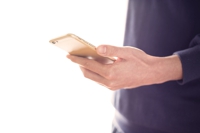 Rather than going into as much detail as we have with the 6s, this is going to be more of a commentary about what the iPhone 6 and 6 Plus are missing that the more modern phone has. It’s a companion piece, if you will, so you’ll get the most out of it if you’ve also read our information about Apple’s most recent device.
Rather than going into as much detail as we have with the 6s, this is going to be more of a commentary about what the iPhone 6 and 6 Plus are missing that the more modern phone has. It’s a companion piece, if you will, so you’ll get the most out of it if you’ve also read our information about Apple’s most recent device.
Plenty of things are the same regardless of which phone you go for, including the sizing of the screens. The iPhone 6 has a 4.7 inch screen whilst the iPhone 6s has a 5.5 inch one. The phones are available in the same colours with the exception of the rose gold – that’s exclusive to the newer version of the phone.
Both phones also have Siri and they have the Touch ID, but the iPhone 6 and its larger partner only have an A8 64-bit dual-core 1.4Ghz chip, meaning both operate a bit slower than their more recent counterparts. The 6s also has 2GB of RAM compared to the 6’s 1GB, meaning that apps and so on can be switched between with much more speed on the newer model.
Camera wise the iPhone 6 has an 8 megapixel camera compared to the 6s’s 12, and a 1.2 megapixel front-facing camera in comparison to the 5 on the newer model. The 6s can also shoot 4K video compared to the 6’s 1080p video. To be honest, this is only really going to make a difference if you’re planning on shooting blockbuster movies.
Storage options are the same on both phones. They come in either 16GB, 64GB or 128GB varieties, so there’s nothing additional to think of on that front. The lack of 4K videos does make the 16GB option slightly more worthy of consideration with the iPhone 6, but not by much.
The biggest difference between the two phones comes in the 3D Touch, insomuch as the iPhone 6 doesn’t have it. It’s not going to be a deal breaker unless you’re used to using Force Touch on your Apple Watch and keep coming close to breaking you iPhone’s screen.
There is a slight difference in size between the newest phone and its older friend. The 6s is 7.1 mm thick against the 6’s 6.9mm, and the newer phone is 143g rather than 129g. In other words, the newer phone is thicker and heavier than the older one, but in amounts that will be essentially negligible to all but the fussiest of users.
The final thing of note is the material used for the composition of the phone. On the iPhone 6s it’s series 7000 aluminium, on the 6 it’s series 6300. The former gives the new phones a touch more rigidity, whilst the latter was the cause of some problems on the launch of the iPhone 6 and 6 Plus. Some people were reporting that their phone was bending when put under pressure, ending up with a definite but undesired curve in the phone. If you want to avoid the possibility of your phone getting bent when you use it then you’ll want to avoid the iPhone 6.
iPhone 6 & 6 Plus: Improvements Not Overly Noticeable
The newest phone is a huge improvement over its predecessor in ways that may not be immediately appreciable. That said, if you can’t necessarily afford the latest phone but you want to improve upon an older one then you might not think it’s worth the undoubted cost differential, unless you’re addicted to getting the newest and best thing on the market.
3D Touch is the biggest difference between the two devices and it will almost certainly be integrated into all Apple devices moving forward. It means that you might not get the most out of apps once developers cotton on to how to use it properly, so that might be worth bearing in mind if you’re looking to use your phone for the next two years, the usual length of a new mobile phone contract.
iPhone 5, 5s & 5c
Though we’ve grouped these three phones together due to the fact they come under the iPhone 5 umbrella, they’re actually very different devices in their own right. We’ll start by looking at the 5s versus the 6 as the 5s is the most recent of the 5th generation of iPhones.
iPhone 5s
Starting off with the size of the phone and it is 7.6mm thick compared to the 6’s 6.8mm, meaning it is also slightly lighter than the 6 at 112g compared to 129g. Both of those things are minor, though, when compared with the screen size. The iPhone 5 family of phones all have 4 inch screens compared to the 6’s 4.7 inch screen and the Plus’ 5.5 inch option. That means the older phones are much smaller in comparison.
Should you be overly bothered by the size of the phone? It really comes down to personal preference. The iPhone 5 group of phones is much more like what you might expect from a phone size wise, whilst the 6 and onwards are bigger and wider in line with most present day smartphone designs. The 6 is, strangely, also slightly easier to handle as it has a curved body rather than the chamfered edge that the 5s boasts.
The screen itself is also different in the two models. The 5s lacks the ‘Retina HD’ that is in the slightly newer 6, whilst the more recent of the two phones also has Ion strengthened glass with an improved polariser that the earlier model doesn’t have. That means the resolution on the 6 is much more clear and crisp than on its predecessor.
The iPhone 6 does have faster connectivity than the 5s, but in a lot of ways you probably won’t notice. The older phone has access to slightly fewer LTE bands and mildly slower Wi-Fi, but you’d need to be a heavy user who is desperate to save milliseconds in your life for it make an significant difference.
The major connectivity difference between the two devices is the addition of NFC, or Near Field Communication, to the more recent variants of the iPhone. The major use of the NFC is for Apple Pay, Apple’s way of using your device to pay for things at certain outlets. It’s a fun little addition to the iPhone 6 and onwards, but it’s at so few outlets that you’re unlikely to care.
Performance wise the A7 dual core chip in the iPhone 5s is slower than its iPhone 6 counterpart. That means that getting through menus, swiping through websites and playing on games will be fine on both devices, but mildly faster on the 6 than the 5.
There is a bit of a difference between the 5s and the 6 as far as their cameras are concerned, but you’d probably have to be David Bailey to be able to notice. They both have an 8 megapixel sensor on the rear camera and a 1.2 megapixel front-facing camera. If you’re choosing a phone based on the ability of the camera alone then you’ll be happy with either of these phones.
Both of the phones have the Touch ID that we talked about earlier, though the iPhone 6’s response time is a little bit quicker if that sort of thing floats your boat. It’s unlikely to be a deal breaker for anyone, but if you’re keen on that extra level of security then you’ll still get it with the 5s – something that we’re not going to be able to say about the 5 or 5c.
iPhone 5s: Functional & Will Do the Job
The biggest difference between the two phones is their size. If you’re not that bothered about having a smaller phone and you’re not desperate for a machine that will work at lightening fast speeds then the iPhone 5s should be given serious consideration. It’s not as beautiful as the 6 or the 6s but it is functional and it will do a good job if you’re not a hugely heavy user.
iPhone 5
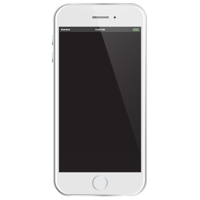 Looking at the iPhone 5 now and it seems to be decidedly old hat compared to the other phones we’ve talked about. Admittedly the design of the 5 is virtually identical to the 5s, both being just 7.6mm thick and weighing in at 112g. The size can be a deal breaker for those of you looking to keep things manageable, so you’ll be pleased that the 5 is more like the phones of old with its 4 inch screen.
Looking at the iPhone 5 now and it seems to be decidedly old hat compared to the other phones we’ve talked about. Admittedly the design of the 5 is virtually identical to the 5s, both being just 7.6mm thick and weighing in at 112g. The size can be a deal breaker for those of you looking to keep things manageable, so you’ll be pleased that the 5 is more like the phones of old with its 4 inch screen.
The charging port is something we haven’t discussed yet, so we’ll mention it now to let you know that it’s the same in all phones from the iPhone 5 onwards. The Lightening port replaced the 30-pin Apple cable of old and has been a major upgrade on the charging front. You can put the Lightening cable in either way round – so no more fumbling in the dark to make sure you’re getting it in properly – and it’s a bit faster than the older style cable. The only reason why it’s worth talking about is if you’ve got speaker docks or the like and they accept the old style 30-pin cable. You can buy adapters but they don’t always work.
The colours are slightly different between the phones, with the 5 coming in black/slate or white/silver. The 5s offers space grey, white/silver and gold. Once again you’re probably not going to be picking your new phone solely based on the colour it comes in, but who are we to judge?
The iPhone 5 does not have the Touch ID function available on the 5s and later models. It means if you want to keep your phone secure then you’re going to have to type in a code every time you log in. The Touch ID might seem gimmicky but it’s actually a brilliant time saver if you’re the type of person that is unlocking your phone every couple of minutes to do something new.
Both the screen size and the pixels in them are the same on each phone, so don’t worry too much on that front. The software is also pretty much the same, though the iPhone 5 will struggle to keep up with the new iOS versions as the years progress. Generally speaking each new version of Apple’s software is designed to work at its best with their new phone, so the older the phone is that you have to more that it will struggle to keep up.
Under the hood is where the real difference between the two phones is noticeable. The iPhone 5s was the first to have a 64-bit dual core processor, with the 5 have a 32-bit A6 chip. What it means in real terms is that the iPhone 5s is significantly faster than its older cousin. It is generally accepted that the more recent iPhone 5s is twice as fast as the 5; that’s some difference when it comes to every day usage.
Last but not least is the camera. On the face of it there isn’t a huge difference, with both phones having an 8 megapixel rear camera. In practice, however, there is quite a difference between the two – not least in the way the software works on the two phones. The 5 can do slo-mo filming but the 5s can shoot in slow motion. That’s a genuinely good feature that will add some real entertainment to the way you use the video function.
There is slightly better exposure on the iPhone 5s than on the 5 and the former also offers less noisy photos. Pictures taken with the 5s will be crisper and clearer than the 5, though neither camera will rival phones like the Nokia Lumia. If you want a phone that is a makeshift digital camera than you’ll be disappointed with any of the iPhone 5 variations.
iPhone 5: An Entry Level iPhone
The differences between the iPhone 5 and 5s are not exactly flashy, but they are significant. If you’re looking to get a phone that can keep up with the updates to the Operating System then the 5 is likely to struggle moving forward. It’s hardly going to be obsolete any time soon, but if you’re the sort of person who likes to make sure your up to date then you’ll want to avoid the iPhone 5.
That said, if you’re looking to get an entry level iPhone that will do most of the things all of the iPhones do but without the bells and whistles of the more recent releases then this will do the job. It’s arguably the last iPhone you should be looking at on our list – with the possible exception of the 5c – but if needs must and you’re keen to get yourself into the Apple ecosphere then it will be a reasonably cheap way to do so.
iPhone 5c
 The last iPhone we’re going to look at is the 5c. When it was released the 5c was intended to be an entry level iPhone for those that couldn’t afford the latest model. It has the Operating System, a camera and is, in all aspects, an iPhone that you can show off to your friends.
The last iPhone we’re going to look at is the 5c. When it was released the 5c was intended to be an entry level iPhone for those that couldn’t afford the latest model. It has the Operating System, a camera and is, in all aspects, an iPhone that you can show off to your friends.
Whilst all of the other iPhones are sleek and smart, though, the 5c is one that is full of colour and vibrancy. If you’re looking for a phone that will be appropriate to pull out in a high profile meeting then this probably isn’t the one for you. If you’re hoping to pick up a cheap phone for your kid to use, however, then this will be absolutely perfect.
The 5c is made of plastic polycarbonate rather than aluminium and is available in five colours rather than two. The 5c is 9mm thick as opposed to the 7.6mm of the 5, meaning the cheaper phone is also heavier – 132g rather than 112g.
There is no significant different between the two phone’s screens, both coming in at 4 inches and 1136 x 640 pixels. Storage wise there is a bit of a difference, with the 5c coming in 16 or 32 GB variations, whilst the 5 also offers you a 64GB option. As with all iPhones there is no option to add external storage. There is also no difference worth noting between the two phone’s cameras or CPUs, nor is the connectivity any different in them.
iPhone 5c: Great for a Kid, Maybe
We’ll keep this short and sweet. If you want an iPhone that will do a job but be unspectacular then the 5c is definitely worth considering. It’s not exciting, it’s not the hottest thing on the market but it is a bit more fun than the slightly stuffier versions of the phone. If you’re hitting the shops to pick up an iPhone that your kid will be happy to use in front of their friends then this will be the one for you.


